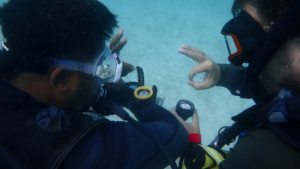
Have you ever dreamed of exploring the magical underwater world but thought scuba diving was only for athletes or marine experts? Think again! Scuba diving is more within reach than you might imagine, opening up a breathtaking realm of adventure to people from all walks of life.
Scuba diving is often perceived as an extreme sport reserved for the young, fit, and fearless. However, the reality couldn't be more different. With modern training techniques, advanced equipment, and supportive dive centers like Scuba Junkie, diving has become an inclusive activity that welcomes enthusiasts of various ages, fitness levels, and backgrounds.
The beauty of scuba diving lies in its adaptability. Professional dive centers have developed comprehensive programs designed to make underwater exploration possible for almost everyone. The Discover Scuba Diving program, in particular, has been a game-changer in introducing newcomers to the underwater world.
Contrary to popular belief, scuba diving isn't limited to professional athletes or young adventurers. Here's a breakdown of who can typically enjoy this incredible experience:
While scuba diving is possible for many, there are some conditions and situations where diving might not be advised:
It's crucial to consult with a dive medical professional and be honest about your health history before pursuing diving.
Scuba Junkie dive resorts have been at the forefront of making diving accessible to everyone. Their approach combines:
This introductory program is perfect for curious first-timers. It typically includes:
For those who fall in love with diving during their initial experience, the Open Water certification is the next step. This internationally recognized qualification allows you to:
The certification process usually takes 3 days and involves:
Many potential divers hesitate due to common fears. Here's how the diving community addresses these concerns:
Beyond the adventure, accessible scuba diving offers remarkable benefits:
Scuba diving is more than just a sport—it's a transformative experience that opens up a whole new world of exploration. With the right approach, training, and mindset, diving can be an incredible journey for almost anyone.
Remember, every expert diver was once a beginner. Your underwater adventure is just a course away!
Pro Tip: Always consult with professional dive instructors, get a medical check-up, and be honest about your physical capabilities before starting your diving journey.
Picture yourself hovering weightlessly in the crystal-clear waters of Sipadan Island, when suddenly, an incredible sight emerges from the blue – a school of massive bumphead parrotfish, their powerful bodies gracefully gliding through the water. Here at Sipadan, these magnificent creatures aren't just rare visitors; they're part of our everyday underwater family, making our corner of Borneo one of the best places in the world to witness bumphead parrotfish conservation in action.
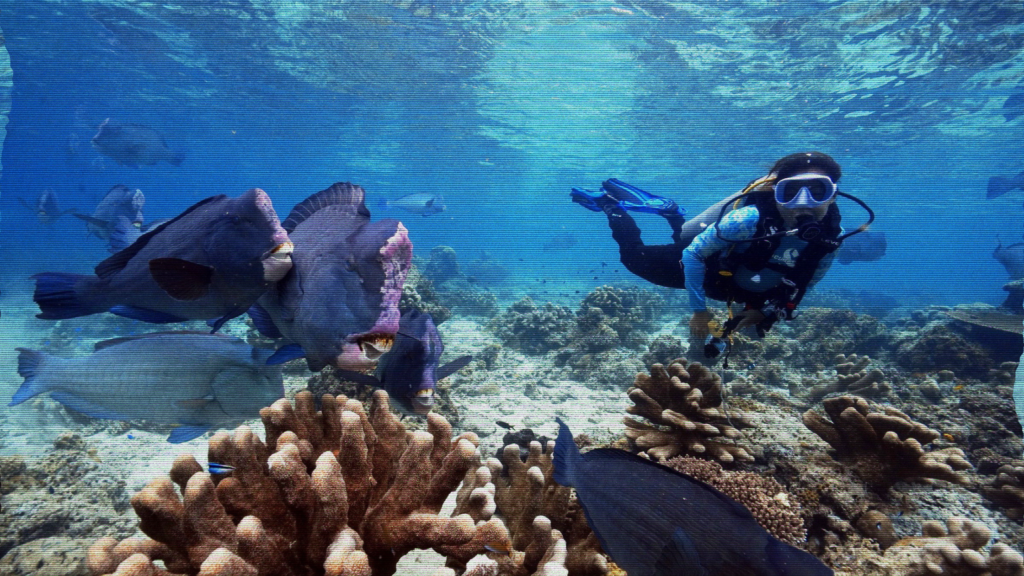
"It was like watching a herd of underwater buffalo!" That's how Sarah, one of our recent divers, described her first encounter with a school of bumphead parrotfish at Sipadan's famous Drop-Off. These gentle giants, some as big as a grown person, are regular residents at our dive sites, often gathering in schools of 20 to 50 individuals. They're so common here that our diving guides have even given names to some of the regular visitors!
Dawn at Sipadan brings a special show that few places on Earth can match. As the first rays of sunlight pierce the water, our resident bumphead parrotfish begin their daily routine. Their distinctive bump-shaped foreheads emerge from their sleeping spots in the reef, and they set off on their important mission – keeping our coral reefs healthy.
These charismatic fish transform from peaceful sleepers to busy workers as they:
According to Marine Protected Areas research, Sipadan's protected status has created a safe haven for these incredible creatures. Our location in the Coral Triangle, combined with strict conservation measures, has helped maintain one of the healthiest populations of bumphead parrotfish in the world.
Our daily diving operations at Scuba Junkie Sipadan have given us a front-row seat to one of nature's most successful conservation stories. Where many regions have seen declining numbers, our bumphead parrotfish population continues to thrive, making every dive an opportunity to witness these magnificent creatures in their natural habitat.
Want to meet these gentle giants yourself? At Scuba Junkie Sipadan, we offer daily dive trips to Sipadan Island, where encounters with bumphead parrotfish are more common than uncommon! Our experienced guides know exactly where to find these magnificent creatures and can help you:
Book your dive adventure with us and experience:
We'd love to hear about your experiences with these magnificent creatures! Have you ever encountered a bumphead parrotfish? What impressed you most about them? Share your stories in the comments below or tag us in your Sipadan diving photos on social media using #ScubaJunkieSipadan #BumpheadParrotfish.
Ready to meet our resident bumphead parrotfish? Contact us to plan your Sipadan diving adventure, or check out our special packages for the upcoming season.
Want to learn more about marine conservation at Sipadan? Visit our Conservation Projects page or follow us on Instagram and Facebook for daily updates from our underwater world.
[Editor's Note: This article was last updated on October 28, 2024, with the latest information about our Sipadan bumphead parrotfish population.]
Have you encountered these magnificent creatures during your dives? We'd love to hear your story! Drop a comment below and share your most memorable bumphead parrotfish moment with our diving community.
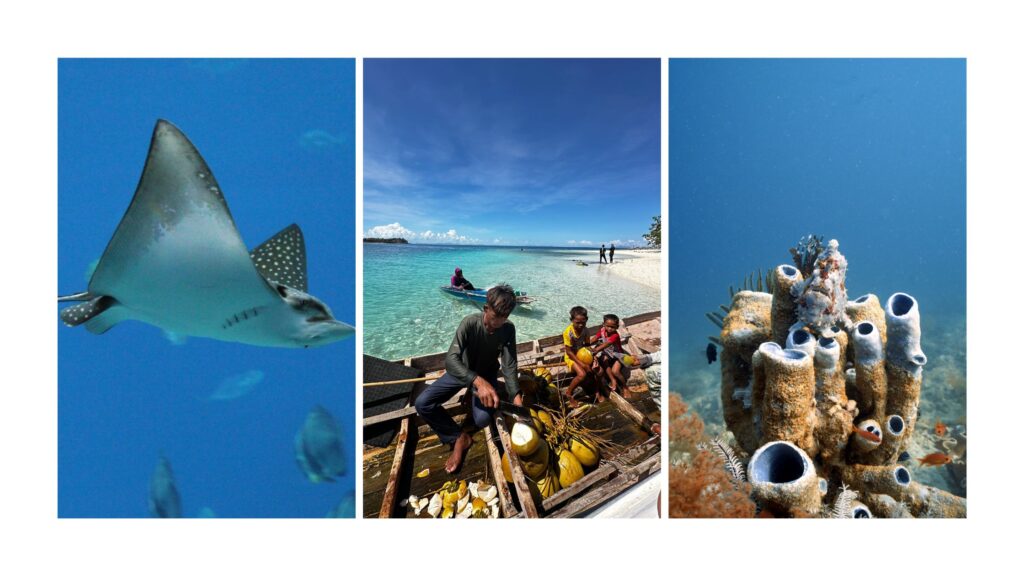
Nestled in the Celebes Sea off the east coast of Sabah, Malaysian Borneo, Sipadan Island stands as a testament to nature's extraordinary beauty. This small oceanic island, barely 12 hectares in size, has captivated the hearts of divers and marine enthusiasts worldwide. Sipadan Island closure for a month each November has become an annual event, aimed at preserving its unique ecosystem. But before we delve into the reasons behind this closure, let's explore what makes Sipadan so special.
The legendary Jacques Cousteau, a pioneer in marine exploration, stumbled upon Sipadan in 1988. Awestruck by its pristine beauty, he famously declared, "I have seen other places like Sipadan, 45 years ago, but now no more. Now we have found an untouched piece of art." This endorsement from one of the most respected names in oceanography catapulted Sipadan into the spotlight, making it a must-visit destination for divers around the globe.
What sets Sipadan apart is its distinctive underwater landscape. The island is actually the tip of an extinct volcanic cone that rises dramatically from the ocean floor. This unique topography creates a mesmerizing underwater environment, with sheer drop-offs plunging to depths of over 600 meters. These walls are adorned with vibrant coral gardens, providing a perfect habitat for an incredible diversity of marine life.
Sipadan's isolation and protection have allowed it to maintain an incredibly rich and diverse ecosystem. The island is renowned for its high concentration of sea turtles, with both green and hawksbill turtles frequently spotted. Large schools of barracuda and jackfish create swirling tornados of silver in the blue waters, while hammerhead and whale sharks make occasional appearances in the deeper waters.
The reef systems surrounding Sipadan are home to over 3,000 species of fish and hundreds of coral species. Divers can expect to encounter an array of exotic creatures, from the delicate mandarin fish to the peculiar ghost pipefish. The island's waters also host a significant population of bumphead parrotfish, which play a crucial role in maintaining the health of the coral reefs.
As one of the world's premier diving destinations, Sipadan is subject to strict regulations to ensure its preservation. These measures are crucial in maintaining the delicate balance of this underwater paradise.
Since 2009, Sipadan has been designated as a protected marine park, under the supervision of Sabah Parks. This status has been instrumental in safeguarding the island's ecosystem from the potential negative impacts of over-tourism and unsustainable practices.
To prevent overcrowding and minimize environmental impact, Sabah Parks has implemented a permit system that allows only 200 divers per day to visit Sipadan. Each permit grants a diver access to the island for one day, with a maximum of two dives allowed during that visit. This limitation ensures that the marine environment is not overwhelmed by constant human presence.
For those lucky enough to secure a permit, there are additional requirements to be aware of:
These regulations might seem strict, but they play a crucial role in preserving Sipadan's unique ecosystem for future generations to enjoy.
Every November, Sipadan Island closes its waters to divers and visitors. This annual closure is a critical conservation measure that has far-reaching benefits for the island's marine ecosystem.
The primary goal of this Sipadan Island closure for month-long hiatus is to support the health and recovery of the island's ecosystem and marine life. By reducing human disturbances, particularly those caused by scuba divers, the closure provides a much-needed respite for the underwater inhabitants of Sipadan.
During this period, the marine life can go about their daily activities without the presence of divers. This break allows for undisturbed breeding, feeding, and natural behaviors that are essential for maintaining a healthy ecosystem. Moreover, the absence of divers gives the coral reefs a chance to recover from any inadvertent damage caused by fins, hands, or equipment throughout the year.
The effectiveness of this Sipadan island closure was particularly evident in 2021 when Sabah Parks reported on the impacts of an extended 18-month closure due to the global pandemic. The results were astounding: significant coral growth was observed, and rarely found fish species were spotted in the area. This extended period of minimal human interference demonstrated the resilience of nature when given the chance to recover.
The annual November closure, while shorter, aims to provide similar benefits on a regular basis. It's a testament to the commitment of local authorities and the diving community to preserve this underwater wonder for future generations.
One of the remarkable aspects of Sipadan is its consistency throughout the year. Unlike many dive destinations that have distinct seasons for marine life or weather conditions, Sipadan offers relatively stable conditions year-round.
The marine life in Sipadan is largely resident, meaning that the spectacular biodiversity divers come to see can be observed throughout the year. From the majestic sea turtles to the swirling schools of barracuda, these creatures call Sipadan home year-round.
While Sipadan is a year-round destination, some months offer slightly more favorable conditions. The best months to visit are typically from February to June and from September to December. During these periods, the sea conditions are generally calmer, offering better visibility and more comfortable diving experiences.
January, July, and August can be a bit more challenging due to increased wind, which can make the boat journey from Mabul to Sipadan more adventurous. However, it's worth noting that even during these months, dive trips are rarely cancelled. The persistent winds might stir up the surface waters, but the underwater visibility often remains excellent, especially at depth.
While the Sipadan island closure in November might initially disappoint some divers, it presents an excellent opportunity to explore other nearby dive sites that are often overshadowed by Sipadan's fame. One such gem is Si Amil Island.
In response to the Sipadan island closure, Scuba Junkie, have begun exploring Si Amil Island. This lesser-known destination has proven to be a fantastic alternative, offering its own unique underwater experiences.
Si Amil is known for its population of devil rays and eagle rays, providing exciting encounters for divers. Additionally, the island boasts an impressive array of macro life, making it a paradise for underwater photographers who enjoy capturing the smaller, often overlooked creatures of the sea.
Picture this: The sun peeks over the horizon as you board the boat at Mabul, the salty breeze tousling your hair. As you cruise towards Si Amil, anticipation builds, your mind racing with thoughts of the underwater wonders awaiting you.
Upon reaching Si Amil, you waste no time slipping into the crystal-clear waters. The first dive is a feast for the senses - vibrant corals, curious fish darting about, and if you're lucky, the graceful glide of a passing ray. Surfacing with a grin, you swap stories with fellow divers over a hearty second breakfast, the taste of adventure still fresh on your lips.
Before you know it, you're back in the water for round two. This time, you focus on the little things - a tiny nudibranch here, a camouflaged frogfish there. The underwater world seems to unveil new secrets with each passing minute.
Lunchtime brings a welcome respite on the island's pristine beach. As you dig into your meal, keep an eye out for the local residents - not other divers, but the cheeky monkeys that call Si Amil home. Their playful antics provide the perfect surface interval entertainment.
As the day winds down, you gear up for one last plunge. The afternoon sun casts ethereal rays through the water, illuminating schools of fish and coral gardens. It's a fitting finale to an unforgettable day of diving.
With three incredible dives under your belt and a head full of memories, you board the boat back to Mabul. As Si Amil fades into the distance, you can't help but feel a sense of wonder at the hidden gem you've just explored.
What sets Si Amil apart is not just its underwater attractions but also its pristine beaches. Unlike the more developed Mabul, Si Amil offers a true tropical island experience with its turquoise waters and white sand beaches. The presence of playful monkeys adds an extra element of excitement to the surface intervals.
For those looking for even more variety, daily trips to Mabul and Kapalai continue to operate during Sipadan's closure. These sites offer their own unique diving experiences, from vibrant artificial reefs to muck diving paradises teeming with bizarre and beautiful critters.
As we wrap up our dive into the annual Sipadan Island closure, let's surface with some thought-provoking questions. Grab a virtual cup of coffee and let's chat about the future of this underwater paradise.
First off, what's your take on closing the island for a month each year? On one hand, it's a bold move towards sustainable tourism, giving the marine life a much-needed breather from our bubble-blowing presence. But on the flip side, it's not a simple decision. There's a delicate balance between preserving nature and supporting the local economy that relies on dive tourism. Do you think this annual timeout strikes the right balance, or should we be exploring other approaches?
Speaking of approaches, let's dream big for a moment. If you were in charge of Sabah Parks for a day, what would be on your conservation wishlist? Maybe you'd push for stricter enforcement of diving regulations? Or perhaps you'd love to see more extensive research programs to really understand what's happening beneath the waves? How about ramping up education initiatives for both locals and tourists? The possibilities are as vast as the ocean itself. What ideas do you have that could take Sipadan's protection to the next level?
Now, here's a question that really makes you dive deep: Does this month-long closure actually make a splash in terms of conservation? We saw some pretty amazing results during the extended closure in 2021, with coral growth and rare fish sightings. But when it comes to the annual one-month break, the effects might be more subtle. How do you think we could measure the impact? Are there creative ways we could quantify the benefits to really understand if this approach is working?
These aren't just rhetorical questions – we really want to hear your thoughts! As fellow ocean enthusiasts, your insights and ideas could spark the next great conservation initiative. So don't be shy – dive into the comments and let's keep this important conversation flowing. After all, it's going to take all of us working together to ensure that future generations can experience the magic of Sipadan just as we do today.
Remember, every comment, every idea, and every action, no matter how small, can create ripples of change. So, what are your thoughts on preserving paradise?
Borneo, the third-largest island in the world, is a paradise for adventure seekers and nature enthusiasts. It is shared by three countries: Malaysia, Indonesia, and Brunei. This island is renowned for its rich biodiversity, stunning landscapes, and vibrant cultures. Whether you're exploring lush jungles, diving into crystal-clear waters, or wandering through bustling cities, Borneo offers a myriad of unforgettable experiences. Here are ten things you can't miss while visiting Borneo.
Borneo is located in Southeast Asia and is divided among three countries: Malaysia (Sabah and Sarawak), Indonesia (Kalimantan), and Brunei. The island is known for its extensive rainforests, which are some of the oldest in the world, and its incredible biodiversity. Visitors to Borneo can expect to encounter unique wildlife, ancient cultures, and breathtaking natural beauty.
Kota Kinabalu, the capital of Sabah, Malaysia, is a vibrant city that serves as a gateway to Borneo's natural wonders. The city offers a mix of modernity and tradition, with bustling markets, waterfront esplanades, and a lively food scene.
Dive Kota Kinabalu with Scuba Junkie! We provide daily dive and snorkel trips to the KK area including the world famous KK Marine Park (Tunku Abdul Rahman Marine Park) which features five amazing islands including Gaya Island and Sapi Island. The marine park is home to beautiful reefs, colourful fish, reef sharks, turtles and even whalesharks in the right season!
One of the highlights of Kota Kinabalu is the weekly quiz night at El Centro Restaurant. This popular event brings together locals and tourists for a fun-filled evening of trivia, delicious food, and great company. It's a fantastic way to unwind and meet new people after a day of exploring the city.
Kinabalu National Park is a UNESCO World Heritage Site and home to Mount Kinabalu, the highest peak in Southeast Asia. This park is a haven for nature lovers, offering a range of activities from trekking and bird watching to exploring its diverse flora and fauna.
The climb to the summit of Mount Kinabalu is a challenging but rewarding adventure, providing breathtaking views of the surrounding landscapes. Even if you don't make it to the top, the park's lower trails and botanical gardens are equally impressive, showcasing the rich biodiversity of Borneo.

Located near Sandakan in Sabah, the Sepilok Orangutan Rehabilitation Centre is dedicated to the rescue and rehabilitation of orphaned and injured orangutans. Visitors can observe these incredible creatures up close as they are rehabilitated and prepared for release back into the wild.
The center offers an educational experience, highlighting the importance of conservation efforts in preserving the orangutan population. Watching the orangutans swing through the trees and interact with each other is a truly heartwarming and unforgettable experience.
The Kinabatangan River is one of Borneo's most famous wildlife hotspots. A river cruise with River Junkie Hornbill Lodge offers an unparalleled opportunity to see a variety of wildlife, including pygmy elephants, proboscis monkeys, and an array of bird species.
The lodge provides comfortable accommodations in the heart of the jungle, allowing you to immerse yourself in the natural beauty of the area. Guided river cruises and jungle treks offer the chance to explore the diverse ecosystems and witness the incredible biodiversity of Borneo up close.
Danum Valley is one of the most pristine and untouched rainforests in Borneo. This conservation area is home to an incredible array of wildlife, including orangutans, clouded leopards, and the elusive Bornean pygmy elephant.
Visitors can stay at the Borneo Rainforest Lodge, which offers luxurious accommodations and guided tours of the surrounding jungle. Activities include canopy walks, night safaris, and jungle treks, providing ample opportunities to experience the rich biodiversity of the rainforest.
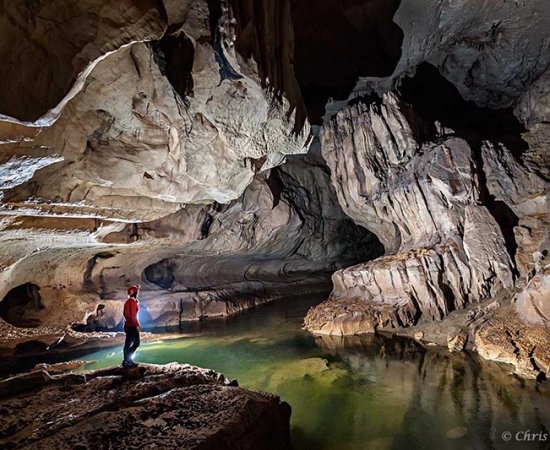
Gunung Mulu National Park in Sarawak is famous for its spectacular limestone karst formations and vast cave systems. The park is home to the world's largest cave chamber, Sarawak Chamber, and the stunning Deer Cave, which houses a large colony of bats.
Exploring the Mulu Caves is an adventure like no other, with guided tours taking you through underground rivers, towering stalagmites, and immense caverns. The park also offers a range of other activities, including jungle trekking and canopy walks, allowing you to fully experience its natural beauty.
Kuching, the capital of Sarawak, is a charming city with a rich cultural heritage. The city is known for its well-preserved colonial architecture, vibrant street art, and bustling waterfront.
One of the highlights of Kuching is its diverse food scene, offering a mix of traditional Malay, Chinese, and indigenous cuisines. Be sure to visit the local markets and food stalls to sample dishes such as Sarawak laksa and kolo mee. Kuching is also a great base for exploring nearby attractions like Bako National Park and the Sarawak Cultural Village.
Tanjung Simpang Mengayau, also known as the Tip of Borneo, is located at the northernmost point of the island. This stunning location offers breathtaking views of the South China Sea and the Sulu Sea, as well as beautiful sandy beaches and clear turquoise waters.
Visitors can relax on the beach, take in the scenic views, and explore the nearby Rungus longhouses to learn about the local culture. The Tip of Borneo is a perfect spot for a peaceful getaway and a great place to watch the sunset.
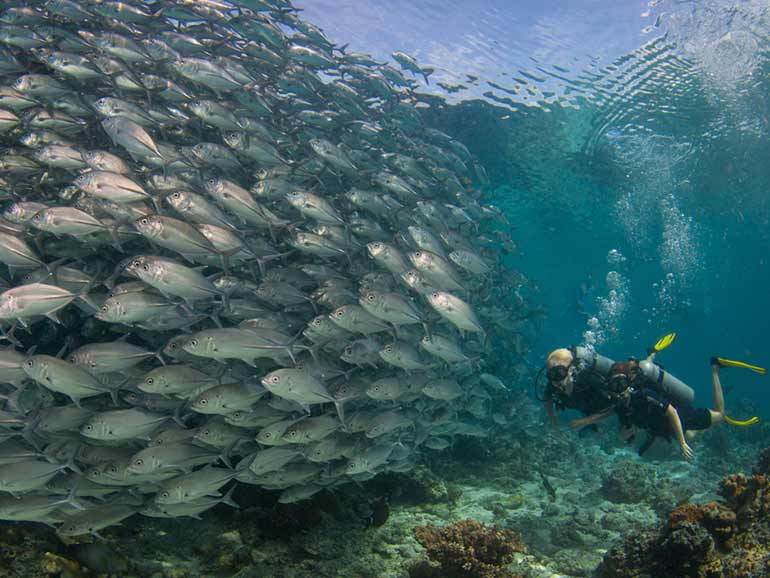
Sipadan Island is renowned as one of the best diving destinations in the world. The island's crystal-clear waters and vibrant coral reefs are home to an incredible variety of marine life, including turtles, sharks, and colorful fish.
Diving and snorkeling in Sipadan offer an unforgettable underwater experience, with opportunities to explore dramatic drop-offs, underwater caves, and coral gardens. Due to its protected status, the number of daily visitors to Sipadan is limited, ensuring that the island's pristine beauty is preserved.
When traveling around Borneo, it's essential to be prepared for a diverse and unique experience. The currency used in Malaysian Borneo (Sabah and Sarawak) is the Malaysian Ringgit (MYR), while Indonesian Borneo (Kalimantan) uses the Indonesian Rupiah (IDR). Brunei uses the Brunei Dollar (BND).
Borneo is home to a mix of religions, with Islam being the predominant religion in Malaysian Borneo and Brunei, while Christianity and indigenous beliefs are more common in Sarawak and parts of Kalimantan. It's important to respect local customs and traditions, particularly in more conservative areas.
The food in Borneo is diverse and delicious, with a mix of Malay, Chinese, and indigenous influences. Be sure to try local dishes such as nasi lemak, rendang, and various seafood delicacies.
Borneo's culture is rich and varied, with a strong emphasis on community and tradition. Take the time to learn about and appreciate the local customs, whether it's through visiting traditional longhouses, participating in cultural festivals, or simply interacting with the friendly locals.
Borneo is a destination that offers something for everyone, from thrilling adventures and wildlife encounters to cultural experiences and stunning natural beauty. By embracing the island's unique offerings, you'll leave with memories that will last a lifetime.

Sharks have roamed the oceans for over 400 million years, long before the first dinosaurs appeared. They play a crucial role in maintaining the health of marine ecosystems by keeping populations of other marine species in check. Despite their importance, sharks are often seen as terrifying predators, primarily due to sensational media portrayals. However, this perception is far from reality.
The fear of sharks is largely based on myths and misconceptions. In truth, shark attacks on humans are extremely rare. According to the World animal foundation, there are about 63 unprovoked shark attacks each year, with 5 to 6 of these attacks resulting in death. In 2023, there was a slight increase to 69 attacks, but this number still fits the average trend over the past five years.. When sharks do bite humans, it is usually a case of mistaken identity. Surfers and swimmers can sometimes be mistaken for seals or other prey due to their movements and silhouettes in the water.
Moreover, sharks are generally uninterested in humans as a food source. They prefer their natural prey, such as fish and marine mammals. Proper interaction and understanding can significantly reduce the risk of shark encounters. Divers and swimmers are encouraged to follow safety guidelines, such as avoiding wearing shiny jewelry, which can attract sharks, and refraining from swimming in areas where there are known to be large schools of fish.
The intense fear of sharks can be largely attributed to the impact of the movie "Jaws," released in 1975. This iconic film depicted sharks as vengeful man-eaters, instilling a deep-seated fear in the public psyche. The media has further fueled this fear by sensationalizing shark attacks, often using graphic imagery and dramatic headlines. Such portrayals have created an exaggerated perception of the danger sharks pose.
In reality, the likelihood of being attacked by a shark is extremely low. Statistically, you are more likely to be struck by lightning or injured by a falling coconut than to be attacked by a shark. The disproportionate fear of sharks stems from a combination of cultural influence and lack of understanding about these creatures.
Sharks are naturally wary of humans. In the underwater world, we are unfamiliar and strange beings to them. Sharks rely heavily on their senses, such as electroreception and smell, to navigate and hunt in the ocean. These senses help them detect the heartbeats and electrical impulses of their prey. Humans, however, do not emit the same signals that sharks typically associate with food.
While sharks often capture our imagination as deadly predators, there are many everyday occurrences that are far more dangerous. Here are five things more likely to kill you than a shark:
These comparisons highlight how irrational our fear of sharks can be when viewed in the context of everyday risks.
While humans fear sharks, the reality is that sharks have far more reason to fear humans. It is estimated that humans kill over 100 million sharks each year. This is primarily due to overfishing, bycatch, and the demand for shark fins, which are considered a delicacy in some cultures. The practice of finning, where sharks are caught, their fins removed, and then discarded back into the ocean, often while still alive, is particularly brutal and wasteful.
This massive decline in shark populations poses a severe threat to marine ecosystems, as sharks play a critical role in maintaining the balance of ocean life. Conservation efforts are vital to protect these misunderstood creatures. Organizations such as Oceana and the World Wildlife Fund (WWF) are actively working to raise awareness and implement policies to safeguard shark populations.
By becoming ambassadors for sharks, we can help shift the narrative from fear to conservation. Educating others about the importance of sharks and advocating for their protection can contribute significantly to preserving these magnificent creatures and the health of our oceans.
In conclusion, while sharks may evoke fear due to cultural portrayals and sensationalized media, the actual danger they pose to humans is minimal. By understanding and respecting sharks, we can coexist peacefully and work towards their conservation, ensuring that these vital creatures continue to thrive in our oceans for generations to come.
Are you ready to interact with sharks in a safe environment? Book your Sipadan trip with Scuba Junkie and witness the kings of the oceans up close. Our experienced guides will ensure you have a safe and unforgettable diving experience, offering you the chance to see these magnificent creatures in their natural habitat.
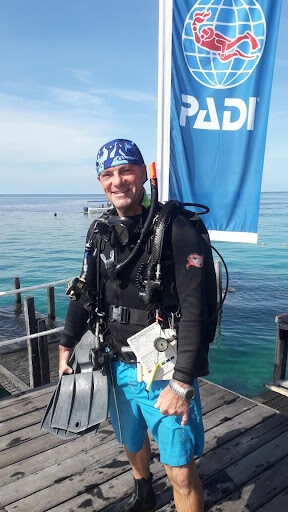
After working for almost 23 years in Finance and Advertising in the corporate world, working my way up from junior positions to supervisory and eventually into management; the tight deadlines, extremely long working hours and heavy stress, it became apparent that the “fun” started to wain.
“I love my job" was becoming a statement that I began to say less and less, eventually turning into resentment and thoughts of “I hate my job" were soon becoming more and more normal.
Big pay cheques and regular considerable sized bonuses seemingly weren't enough compensation for the toll on my psychological make-up, the drain on my happiness was huge.
I decided that there was more to life than being stuck in an office for up to 45 years to then retire and finding myself unable to do anything more adventurous than playing bingo, high tea dancing, early sleeping nights and my days filled with “I wish I could have done that when I was younger”.
I had taken my diving certifications during my annual leave holidays, eventually taking the Divemaster course for my own challenge whilst still working in the corporate world and on the fast slippery slope of no longer enjoying fat salaries and resenting the long 16-18 hours, 7 days a week.
However, I had no intention to work as a Divemaster professionally, I was happy to have long dive holidays and observe how things were run. I began assisting courses that in hindsight I could see weren't being conducted well, many skills overlooked, standards being dropped and ignored. This led me to acknowledge that I can do a better job and become a much better instructor.
I had decided I must become a PADI Instructor.
During my IDC I knew that being a teacher, a coach, an educator and a mentor was what I was meant to be, my passion for diving could be passed on to others to share.
My own fears and numerous mild panic surfacing during my own Open Water Course were to prove valuable in being able to encourage others to overcome theirs.
If you would like to find out more about the PADI Open Water Course, click here.
I began teaching in Mabul in March 2010, initially a 3 month “working holiday” at a small company, I went back and forth to the UK several times and also spent a year in Sri Lanka. During this time, I realized that no longer did I want to go back to the UK, nor in fact did I want to stay in Sri Lanka.
I felt compelled to go back to Mabul and work there.
In March 2013, I was full time, living, working and teaching on Mabul. This is my true passion and my dreams have come true.
In the 10-12 years of working at another company, I always admired from a distance the practices, principles and procedures of Scuba Junkie; I always dreamed of working at Scuba Junkie, I had several miss timed discussions with the Big Bosses, unfortunately there were no positions available.
Covid19 took its toll on everyone around the world, scuba diving wasn't excluded from this. However, recovery was in sight, diving was opening, dive companies were starting to operate and an opportunity to make the move was right for me.
In May 2022, another dream came true; I started to work at Scuba Junkie.
This successful well oiled machine is an absolute privilege I am so happy to be a part of. The quality of everything is spot on.. the dive equipment, the boats, the maintenance, the dive management, scheduling and support, the quality of teaching.. everything ticks the right boxes.
Attention to detail is second to none, every piece of equipment is accounted for and very well maintained, every diver is treated as an individual, and an instant friendship with guests is formed like family. Dive scheduling is carried out to military precision which can't be easy when there are upwards of 70 divers; PADI courses are conducted meticulously and best allocated appropriately whether age of students, language requirements, instructor experience, small groups, one to one if necessary, course programs are well thought out and managed to meet individual student and instructor requirements.
Guests are well informed as to where they are diving the next day.
Boat Captain scheduling is key, maintenance and service of engines carried out timely.
Dive briefings are informative, Divemasters (mostly in-house “zero to hero" trained) are professional as well as fun and friendly.
The team work amongst the Scuba Junkie staff is enormous, everyone helps out loading and unloading boats.. tanks.. equipment, even if you are not on that boat, we all help out.
My role is varied, some days teaching courses, some days Discover Scuba diving from the jetty, some days guiding certified divers around Mabul, Kapalai, and also at the infamous Sipadan, one of the top dive destinations in the world.
Want to find out more about Sipadan diving packages?
https://www.scuba-junkie.com/sipadan-diving-packages
I love sharing my knowledge and experience with other divers and my fellow colleagues.
I love teaching students at all levels, whether from beginner right up to the pro level.
My passion, enthusiasm and energy is thrown into all my dives, whether they are course dives or guiding fun divers.
Every day I can honestly say “I LOVE MY JOB".
Everyday when I walk down the Scuba Junkie jetty, I feel the biggest smile take over my face.
I am proud to be part of the Scuba Junkie family
I am proud to be a PADI Instructor.
Do you want to fulfil your dream and become a PADI Instructor like me?
Find out more about the upcoming Instructor Development Course here.
We have some amazing news that we would like to share with you!! In April 2024 the Scuba Junkie Team will launch KLM Eliya - our first purpose built scuba diving liveaboard! KLM Eliya will depart on her Maiden Voyage in April in the world famous Komodo National Park.
KLM Eliya is a 30 metre phinisi style ship that will be based in Komodo National Park. The diving in this area has something for everyone from our resident manta population to the smallest pygmy seahorse! Komodo sits in one of the most bio-diverse locations on the planet with a huge variety of coral reefs and marine life. Diving Komodo will take your breath away and being about to do it on Komodo’s newest liveaboard will make your holiday one to remember!
The Maiden Voyage of KLM Eliya is already sold-out, but do not worry we still have some extra special offers for you. Why not be one of our first guests to experience our newest venture in Komodo?
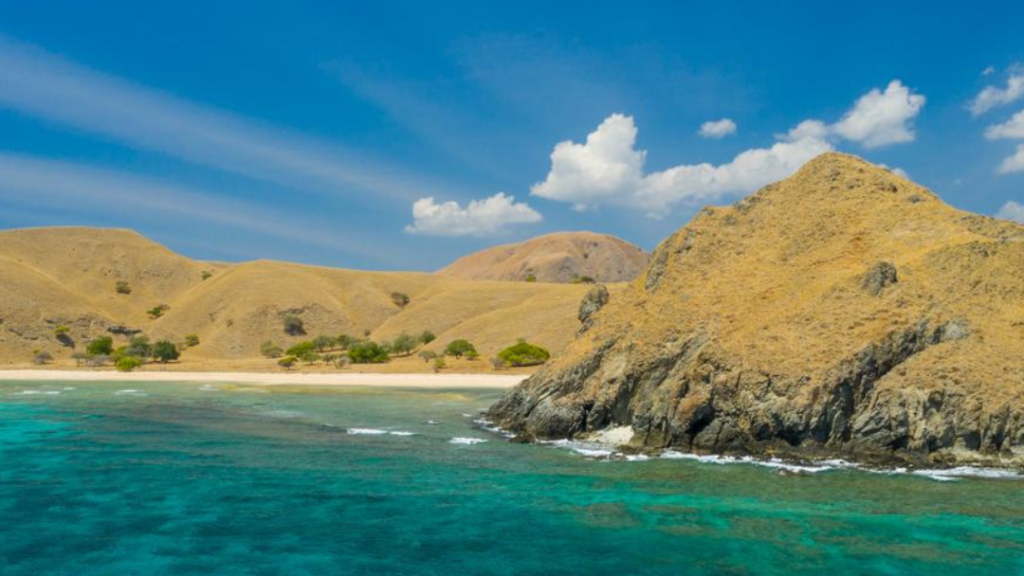
For all trips departing in May 2024 we are offering 30% off the listed prices. Trips onboard KLM Eliya are 6 day / 5 nights with 20 dives included as standard. Heading all the way to Komodo really does need a trip to see the famous Komodo Dragons so this is also included as part of your trip.
Read a little more about our schedule and itinerary here.
Why not think about combining our incredible Komodo liveaboard and a trip to Sipadan - one of the most famous diving destinations in the world! If you would like to combine your scuba diving holiday check out our special Combo Deals. Scuba Junkie locations are hand picked to offer you some of the best diving in South East Asia so why not get a few of these ticked off your bucket list!! You can combine our Komodo liveaboard with our Scuba Junkie Resorts in Komodo, Penida, Sangalaki & Sipadan.
If you would like to find out more about our Komodo liveaboard and our opening offers get in touch now to find out more
My entire scuba diving career I have been in very cold or moderate temperatures (12’C-26’C) , personally I'm not a fan of the cold, I don't think anyone is. As soon as I got the opportunity to dive in water that rarely ever goes lower than 29’C-30’C I was instantly sold!
But warm water can’t be the only reason I decided to leave my previous Job as an instructor in South Africa's most diverse diving location.
I gathered the majority of my dives (400+-) and experience in South Africa - Sodwana Bay.
Sodwana Bay has exceptionally healthy reefs that stretch over 9 miles of pristine untouched beaches. The Marine life has everything you could want as a diver , from the Best macro diving to the biggest and most beautiful marine life such as whales, dolphins, turtles, Mantas and many more.

Well, I was extremely interested in Muck diving which I have never experienced before. As someone who loves finding extremely camouflaged and hidden creatures, I was ready for a new challenge , and in the beginning it was most definitely not a walk in the park, but I definitely warmed up to it and had some amazing encounters such as finding a clown frogfish with a smaller one underneath its belly and being able to see the extremely rare hairy octopus! And for all my nudibranch enthusiasts I was able to spot a Solar Powered Nudibranch!

Sipadan was the biggest reason I decided to make the move to Scuba Junkie Mabul because it's so close to such a world class island for diving. Sipadan has definitely lived up to expectation as everyday it's providing amazing experiences from the Chevron Barracuda vortex, Bumphead parrot fish, Schooling Jackfish (big eye trevally) and the constant sightings of Sharks which is such a fresh breathe of air compared to complexities of locating macro for my guests. Although diving Sipadan is not easy with all of its oceanic currents and unpredictability, but that's also what makes it so thrilling as when you drop in you will never get the same dive as yesterday. For all the adrenaline junkies out there the currents will definitely make you breathe through your cylinder more than a little bit faster than usual.

